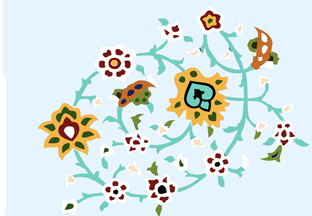Muslim Histories & Cultures
An online collection of course materials
Seminar Ten: Case Studies – Islam in National(ist) Contexts
Case Study Template:
1. Product:
To create the Summer Institute product for Seminar 10, you will each complete a case study using the guidelines outlined below.
Additionally, you will create an electronic product for presentation at this seminar and used again at the summer institute. These presentations should be approximately 15-20 minutes in length.
- Focus Countries/Areas: Spain, Pakistan, Turkey, United States, India, Indonesia, East Africa or another area approved by your district co-ordinator
- Procedures:
- Choose a country.
- Read the corresponding case study articles.
- Follow the procedures listed in #2-5 below.
- Develop a creative product, using an electronic format like powerpoint, webquest, imovie, etc., that features your country.
2. Questions:
What pictures/information/stories do the readings portray about the role of Islam within the nation you have chosen that help the reader to develop a view that understandings of Islam are both culturally constructed and ultimately diverse? Can you provide specific instances of the manner in which contexts (political, social, economic etc) impact both the interpretation and expression of religious concepts and beliefs?
What role has the colonial legacy played in the formation of the particular state you have chosen? How has this legacy influenced understandings of religion, particularly Islam?
How have conceptions of the nation-state and nationalism impacted the relationship between religion and politics in the particular nation-state that have you chosen?
During this session you will also be evaluating the Case Study method as a pathway to increased knowledge for personal and classroom use.
3. Background/Data:
What is the context of these readings/additional data?
Why is the consideration of this context important for a clearer understanding the topic (in this case Islam and ultimately its diversity)?
Do you have enough information to answer the question with some feeling of authority? If not, gather some additional material and be sure to cite the works used.
4. Evaluation:
Considering the amount, quality, and reach of your information, evaluate the materials that you have so that you may proceed to step 4.
At this point, you may find that you do not have every piece of information that you need to make a completely full and accurate evaluation. What should you consider in making your evaluation? What limitations does the information force you to state or acknowledge?
Both contextually and methodologically, how did the case study produce clearer understandings about specific information?
5. Conclusion with support:
Based on the information in this case study, what is your conclusion with supporting information to the questions about Islam posed in #2?
In developing the conclusion you have done many things:
1. You read the information provided by the Islamic Studies scholar.
2. You considered the context and the meaning of that context.
3. You added to your information with additional data.
4. You recognized the limitations and opportunities of your evaluations using a case study which impacted what you knew.
5. You answered questions about the content and method.
What does this experience teach you about making decisions with limited information? How can this experience give you greater insight into the TEKS objective that students must learn about how professionals make decision with limited information?
If you have any questions, please check with your district supervisor.
